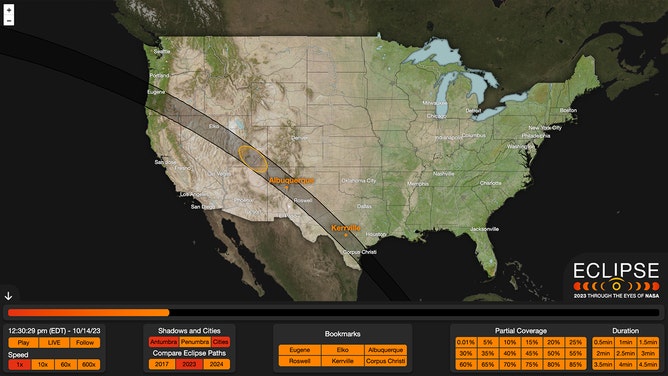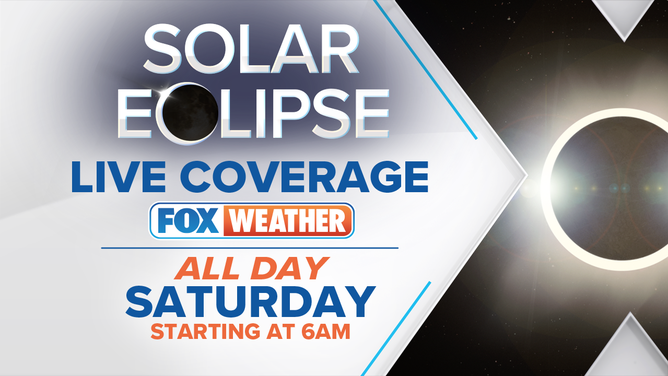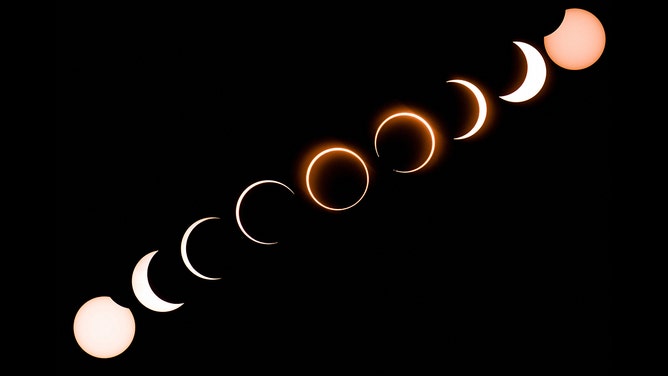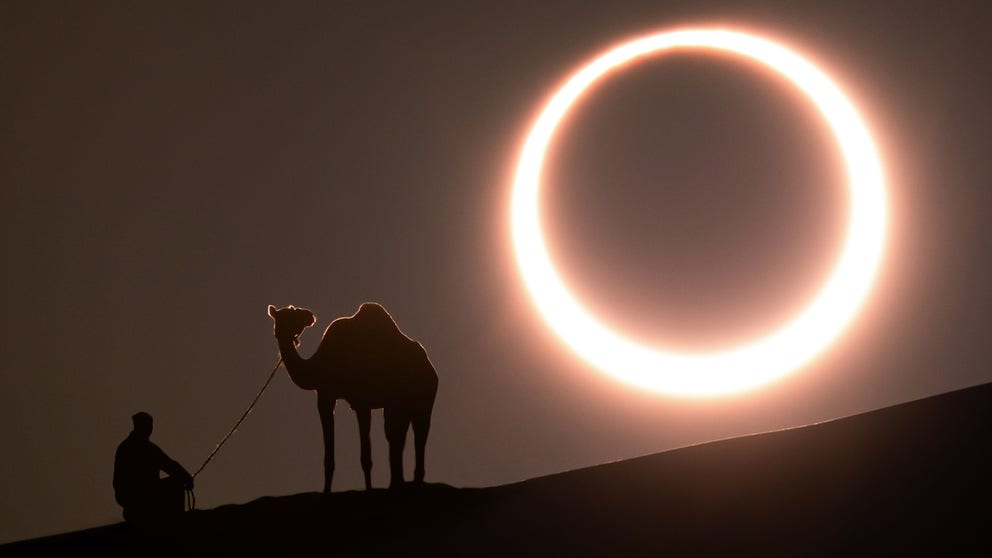Track this week's annular solar eclipse down to exact second with NASA's interactive map
The Moon will pass between the Sun and Earth on Oct. 14, causing an annular solar eclipse. Although not a total solar eclipse, the moon will still cover much of the sun, leaving just an outer ring visible.
What is a solar eclipse? The different types and how they happen
During a total or annular solar eclipse, the moon passes in front of the sun and casts its shadow upon the Earth's surface.
Whether you're a casual skywatcher or an avid eclipse chaser, everyone is excited to witness a rare celestial event known as a "ring of fire."
The Moon will pass between the Sun and Earth on Oct. 14, causing an annular solar eclipse. Although not a total solar eclipse, the moon will still cover much of the sun, leaving just an outer ring visible.
If you want to keep track of every second of the event, NASA's Eclipse Explorer offers an interactive map that can enhance your viewing experience. It allows users to easily toggle informative layers on and off and navigate the map with a simple slider.

Eclipse Explorer is split into two parts: the main map and the user interface on the bottom. The interface can be collapsed by clicking the arrow on the left.
(NASA's Scientific Visualization Studio)
A grid of buttons at the bottom is divided into different categories: shadow components, city labels, eclipse paths, coverage percentages and duration intervals. Clicking on any button displays or hides data on the map. Clicking on city labels opens a pop-up with more eclipse info.
NASA also provides a helpful countdown widget to the moment of maximum coverage for each city.
SOLAR ECLIPSE, ORIONID METEOR SHOWER MAKE OCTOBER SKYGAZING FORECAST A STANDOUT

(FOX Weather)
Nine states will be along the path of the maximum eclipse, which stretches from Oregon to Texas. The Moon will cover 90% of the Sun during the maximum eclipse known as annularity. The eclipse in the U.S. begins in Oregon just after 8 a.m. PDT and ends in southeastern Texas at 1:33 p.m. CDT.
During the peak eclipse, the outer edges of the Sun will be the only parts visible from behind the Moon; this is known as the "ring of fire."
You will need to wear special eclipse glasses during the entirety of the annular eclipse. Taking the glasses off at any point, even during the maximum eclipse, is unsafe.
HOW TO SAFELY WATCH A SOLAR ECLIPSE

FILE – This composite image shows the moon as it moves in front of the sun in a rare "ring of fire" solar eclipse as seen from Tanjung Piai in Malaysia on December 26, 2019.
(SADIQ ASYRAF/AFP / Getty Images)
The annular eclipse comes ahead of the rare total solar eclipse next year. In April 2024, a total solar eclipse dubbed the Great American Eclipse will span the U.S. from Texas to Maine.
